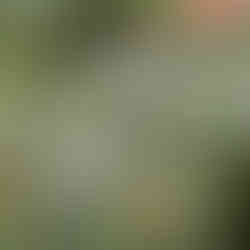Native Garden & Moisture Loving Plants Galore
- Nuts for Natives
- Aug 27
- 4 min read
It all started with a rain garden.
From growing roses and rhubarb as youngsters to learning what to do as first time home owners with a suburban backyard full of trees and dry shade to becoming enthusiastic native plant lovers, Mimi and Mark landed in Easton, Maryland and surrounded their home with nature. Mimi loves the daily awe of it all - the way nature shows itself in different ways, sometimes multiple times a day. Mark is in it for the bees, butterflies and birds.
This part of their gardening story started eight years ago when Mimi and Mark enrolled in a Master Naturalist training course at Adkins Arboretum. Around the same time, they were realizing their new home was somewhat prone to flooding, even though there was no surface water visible nearby. When they learned about rain gardens during the training course they thought that might be the answer to the periodic wet conditions and it was!

Mark dug a 16" deep swale 24 feet long on one side of their rectangular shaped lot. It's about six feet wide and he saved all the mostly clay soil in the back for future gardening projects, having learned it is fairly nutrient rich soil. Mimi and Mark started to fill the swale with native plants that like moist conditions and they were on their way. The water issues almost immediately improved.
Since then, Mimi and Mark have accumulated lots of tips and insights to share. Their garden is abundant and filled with butterflies bees and birds, just the way they like it.
Moisture Loving Plants & Self Sowers
Because Mimi and Mark set out to create a rain garden, they started with plants that grow best in moist soils so right off the bat, they had "right plant, right place" figured out. Perennial cutleaf coneflower (Rudbeckia laciniata), joe pye weed (Eutrochium maculatum), blue lobelia (Lobelia siphilitica), New York ironweed (Vernonia noveboracensis), and blue vervain (Verbena hastata) thrived from the start.

They also spread fairly quickly and filled in the swale and began to move from the swale side to the front and around to the other side of the house, showing Mimi and Mark where all of the moist soils are. And these are growing tall!

Lyreleaf sage (Salvia lyrata), our native sage, is also a prolific self sower. Mimi has let it fill in the areas between the stepping stones around the patio area - it is the perfect plant for spreading and easily withstands the foot traffic.
Zinnias
Mimi added pops of crimson, salmon and orange zinnias (Zinnia), native to Mexico and further south, around her patio area. She buys seedlings each spring from a farmer at the Easton Farmer's Market. These are great additions and keep your eye moving through the space, particularly in August, as most summer blooming plants lull and the fall bloomers have yet to reach their full glory.
Deep Shade Planting Design
This bed created by Mimi and Mark beneath the canopies of two mature trees shows just how much you can do in shade. Five oak leaf hydrangeas are underplanted with a mix of shade loving natives. Bellwort (Uvularia) is spring blooming and, at about 2 feet tall, lanky. The flower stems sort of droop and the yellow flowers hang down. Mimi planted them among solomon's seal (Polygonatum) which both have a similar arching habit but also are stronger stemmed to support the bellwort. Great idea! The next layer down combines heuchera 'autumn bride,' (Heuchera villosa "Autumn Bride') wild ginger (Asarum canadense), Christmas ferns (Polystichum acrostichoides), dwarf crested iris (Iris cristata) and foamflower (Tiarella cordifolia). This combination could work in lots of places with average moisture soils and full to part shade.
Repetition
This is a naturalistic garden that surrounds the house. What holds it together is the repetition. Part of that is thanks to nature and part of it is thanks to the gardeners. The cutleaf coneflowers, New York ironweeds and lobelia self sowed to create part of the repetition. Mimi added clumps of mountain mint (Pycnanthemum muticum) throughout which adds repetition and a chance for your eye to rest.
Shrubs such as winterberry (Ilex verticillata), arrowwood viburnums (Viburnum dentatum) and buttonbush (Cephalanthus occidentalis), all moisture lovers, are dotted throughout and add cohesion among the wildness.
"Lasagna" Gardening

Back to that stockpiled clay soil from the drainage swale, Mimi and Mark continue to use it as they add new garden beds in areas with lawn including that shade bed anchored by the oak leaf hydrangeas. They start with a layer of cardboard, having experimented with newspaper and seeing it really doesn't have the necessary heft, and then add what they might have handy along with some of the clay soil -- usually some compost or Leafgro®, accumulated leaves and such and fairly shortly thereafter, they have a pretty good place to put in a new garden bed. Always a good thing!
Happy Gardening.









































